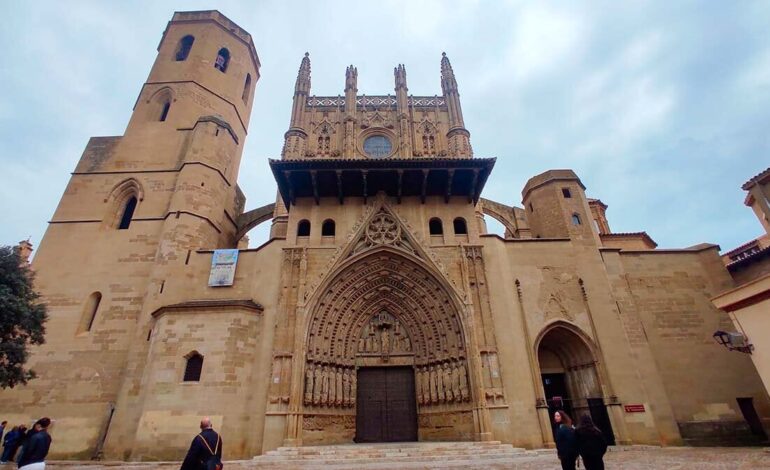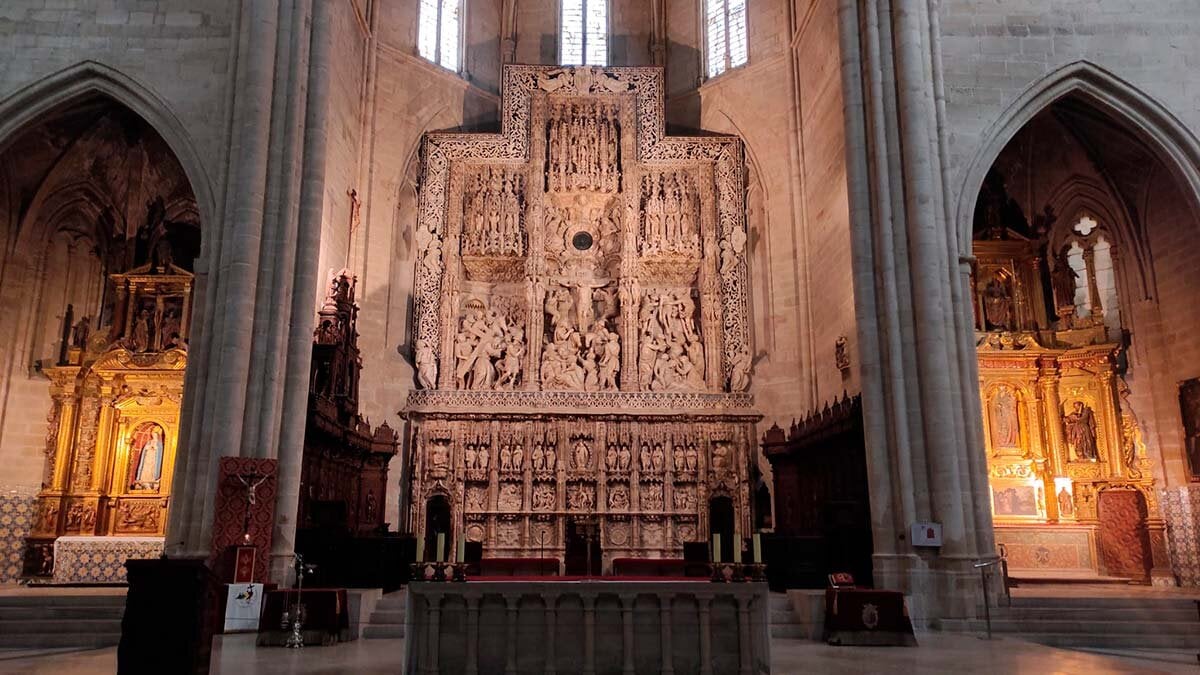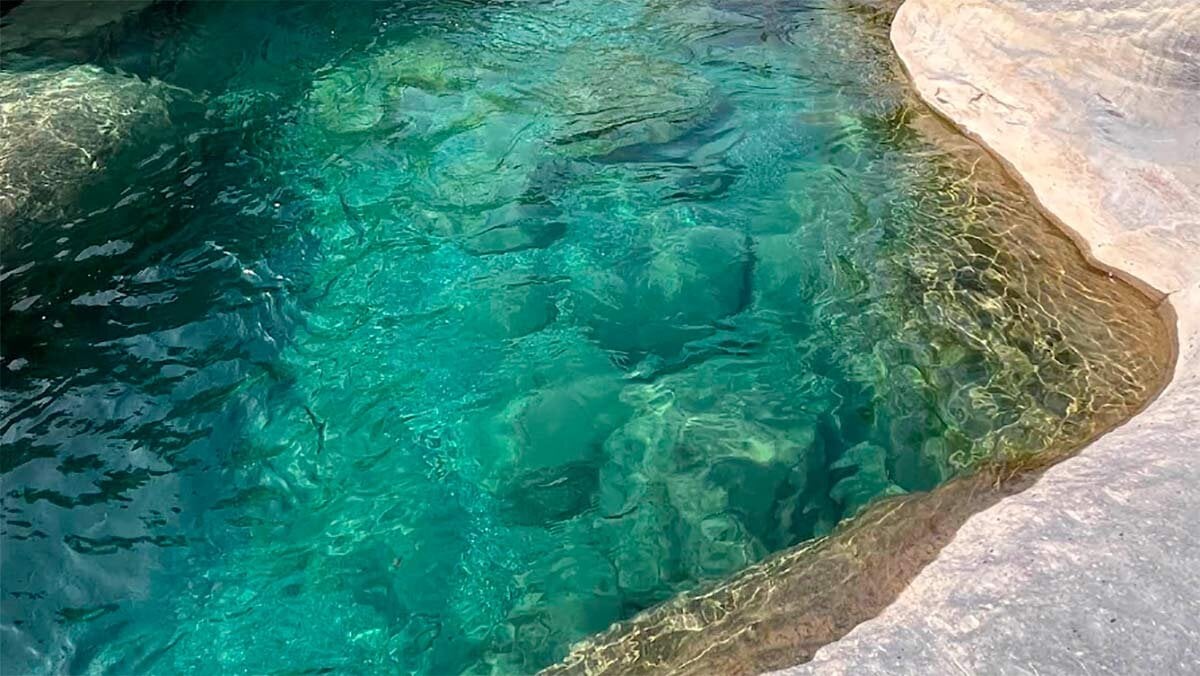
Huesca Cathedral: History, curiosities and schedule to visit a Aragonese Gothic jewel
In the city where the holidays smell like Albahaca and the Green floods the streets every August, a temple imposes on its architecture and history. It is the cathedral of Santa María de Huesca, one of the great treasures of heritage Aragonese, whose stones have seen centuries of transformation, devotion and art pass.
Located at the top of the hill that gave rise to the city, the Cathedral of Huesca is not only a temple, but also a symbol of the evolution of the capital of Oscense. Built on an ancient mosque, its walls collect centuries of artistic styles, from the primitive Gothic to the flaming, and its interior custody masterpieces of the Renaissance, legends of miracles and secrets carved in Alabaster. Here we tell you its story, what to see and how to visit it.

The Cathedral Custody Masterpieces of the Renaissance
The story of the Cathedral of Santa María de Huesca
The history of the Cathedral of Huesca dates back to 1096, when Pedro I of Aragon conquered the city to the Muslims. On the old major mosque, initially converted in Christian temple, the current cathedral was subsequently built. It was Jaime I the conqueror who promoted in 1273 the construction of a temple according to the predominant European Gothic style at that time.
The works began by the head with five apses, the northern wall of the cruise and a sacristy that is still preserved. Between the end of the thirteenth and fourteenth century, the lateral warehouses were added, financed by noble families in exchange for being buried there. In the fifteenth century the tower was built and the entire set with starry cruise vaults was covered, thanks to the patronage of Bishop Juan de Aragón and Navarra.
Already in the 16th century, the wooden eaves that protect the main cover, a very characteristic Renaissance element in Aragon was added. The result was a building that mixes the primitive and flaming Gothic, with brushstrokes from other times and has been Huesca’s spiritual center for more than seven centuries.
The three key points of the Cathedral of Huesca
One of the most prominent elements outside the Cathedral of Huesca is its Gothic cover, built between 1302 and 1307. It is decorated with sculptures of martyrs, virgins, angels and prophets, and in the central eardrum the Virgin appears with the child flanked by angels and the Magi. The whole set is protected by a carved wooden eaves of the 16th century.
The interior of the Cathedral of Huesca impresses by its diaphanous atmosphere. It has three ships, 14 side chapels and a main altar of Alabastro, a Renaissance work by sculptor Damián Forment. This altarpiece represents scenes of the passion of Christ and is considered a jewel of sacred art in Aragon. The chapel of the Rosary and that of the Holy Christ of the Miracles is also notable, linked to a legend that tells how he saved the city of the plague in 1497.
The Diocesan Museum, located in the old Gothic cloister and in the Episcopal Palace, cannot be neglected. It houses a valuable collection of sacred art, with pieces of goldsmiths, medieval art, Renaissance and Baroque. From there you can also access the cathedral archive, which keeps incunable books since the eleventh century.
Visit schedule
Those who wish to visit this architectural jewel can do it from Monday to Saturday, from 9 am to 1 pm and from 4:30 p.m. to 6.30 p.m., provided there are no liturgical celebrations on the main altar. On Sundays and holidays, it remains open to the worship from 9.00 to 13.00 and from 4:30 p.m. to 6:30 p.m.
The price of the general ticket is six euros, while the reduced ticket costs four euros for over 65 years, headline holders, student card up to 24 years, large family, people with disabilities and unemployed people. Groups of more than 15 people can access three euros per person, prior reservation.
Admission is free for religious (priests and nuns), under 12 years and members of the ICOM and ICOMOS. In addition, there are guided visits available for groups of at least 20 people, which also include the Diocesan Museum and La Torre.
How to get to the Cathedral of Huesca
The cathedral is located in the historic center, specifically in the Plaza de la Cathedral s/n, 22002 Huesca, a few meters from the City Council and other emblematic points such as the Monastery of San Pedro el Viejo. It is a pedestrian and accessible zone, ideal for walking.
If you come by car, you can park in the immediate vicinity, in the historic center parking, located less than five minutes walking. For those who arrive by train or bus, Huesca’s Intermodal Station is about 15 minutes on foot.
You can also take advantage of the visit to travel the old town, try local gastronomy or enjoy the festive atmosphere if it coincides with celebrations such as San Lorenzo, in August, when the entire city is adorned with white and green.






